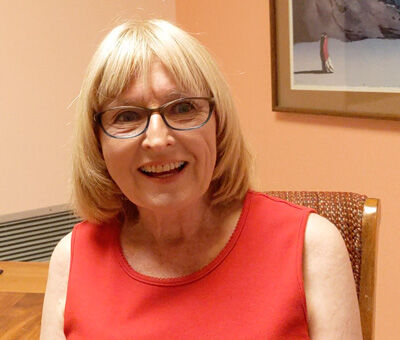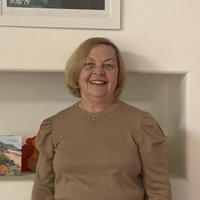We “Go Red for Women” with Dr. Joanna Chikwe
Written By: Adam Pick, Patient Advocate, Author & Website Founder
Medical Expert: Joanna Chikwe, MD, Chair of Cardiac Surgery at Cedars-Sinai Medical Center
Page last updated: February 4, 2025
Let’s unite for the “Go Red for Women” initiative to raise awareness for women’s heart health! Did you know that heart disease is the number one killer of women causing 1 in 3 deaths each year? Did you know that 49% of women have at least one risk factor including high blood pressure, obesity and stress?
To educate you about heart valve disease from a woman’s perspective, we just posted a special video with Dr. Joanna Chikwe, the Chair of Cardiac Surgery at Cedars-Sinai Medical Center. In this unique video, Dr. Chikwe answers 7 important questions that were submitted by women from the HeartValveSurgery.com community.
Ready to Get Involved?
Many thanks to Beth, Carolyn, Cheryl, Donna, Kathy, Kim and Laura for submitting their questions to Dr. Chikwe for the Go Red For Women initiative. It was wonderful to receive our first ever “video questions” from Carolyn, Cheryl, Donna and Kathy that are featured in our new video.
 Carolyn Moser
Carolyn Moser
 Donna Hartly
Donna Hartly
 Kathy Shelton (left) & Cheryl Irvine (Right)
Kathy Shelton (left) & Cheryl Irvine (Right)
If you are interested to get involved on this special day, there are lots of opportunities.
Simply click here to learn more from the AHA.
Thanks Dr. Chikwe & Cedars-Sinai!
I can’t thank Dr. Joanna Chikwe enough for helping us celebrate the “Go Red for Woman” initiative with this educational video.
 Dr. Joanna Chikwe & Adam Pick
Dr. Joanna Chikwe & Adam Pick
I also want to thank the Cedars-Sinai team (that means you Gordon, Dana and Andy) for your support of this very important day and our community!
Keep on tickin!
Adam
P.S. For the hearing impaired members of our community, I have provided a written transcript of my interview with Dr. Chikwe below.
Video Transcript:
Adam Pick: Hi, everybody. It’s Adam with heartvalvesurgery.com, and today our community of patients, family members, friends, doctors, nurses, physician assistants, hospitals, research organizations, and medical companies are going red to raise awareness to heart disease for women. The mission of heartvalvesurgery.com is to educate and empower patients, so today, as we go red for women, we wanted to answer your very important questions all about heart valve surgery from the female perspective. To do that, I am joined by Dr. Joanna Chikwe, who’s not just the Chair. She’s the Founding Chair of Cardiac Surgery at Cedars-Sinai Medical Center in Los Angeles, California. During her fantastic career, Dr. Chikwe has performed thousands of cardiac procedures including many, many, many, many heart valve repair and heart valve replacement operations. Dr. Chikwe, thanks for being with us today.
Dr. Chikwe: It’s always a pleasure to be here, Adam.
Adam: Yeah, so we’re going to get to all these wonderful questions that came in specifically for you, but first, a question. Why is the Go Red for Women initiative so important?
Dr. Chikwe: It’s really important because cardiovascular disease is the number one cause of death in women, and for many years, that wasn’t recognized. The other thing we didn’t really understand or fully appreciate was the differences between how men and women experience heart disease and how we need to tailor treatments to make sure that women actually get as great outcomes as men do.
Adam: Dr. Chikwe, thanks so much for shining the light on why today is so incredibly important. Now, let’s get to the patient questions. The first one is coming in from Donna, and it’s all about symptoms.
Donna Hartley: Hi, Adam. This is Donna from Lake Tahoe, and I have a question for Dr. Chikwe. For heart valve disease, is there a difference in the symptoms between men and women?
Dr. Chikwe: Donna, that’s an absolutely great question. It really cuts to the heart of this discussion. Yes, women often present with very different symptoms to men, and that’s because women’s hearts respond to disease very differently to men. I am lucky enough to sit in an office that’s next door to one of the world’s experts in how women’s hearts are different in this way. She’s called Dr. Noel Bairey Merz, and she’s the Director of the Barbra Streisand Women’s Heart Center here at Cedars-Sinai. Their whole work is jut centered around understanding why women respond differently and treating them – treating them really effectively.
I think for symptoms such as fatigue are much, much more common in women than in men, and because so many different things can cause fatigue, it’s often a reason why heart disease in women gets overlooked. Other good examples are things like cold hands, pain in unusual places like your stomach instead of your chest. That’s why physicians with a specialist interest in women’s heart health are really the key to feeling better and, frankly, living longer.
Adam: Donna, I hope that helped you, and now, Dr. Chikwe, we have a question from Cheryl, a really important question all about potential risks associated with delaying surgery.
Cheryl Irvine: Hi, Adam. It’s Cheryl from Canada. I have a question for Dr. Chikwe, please. I was wondering, for women, can delaying surgery cause any additional risks for patients with heart valve disease and/or atrial fibrillation?
Dr. Chikwe: Cheryl, that’s such an important question, and it’s one that I actually end up working with cardiologists on a lot because they have exactly the same question. Once you’ve got a heart valve problem that’s diagnosed and it’s severe, there are three red flags that we talk about when we’re planning the timing of surgery. The first one is symptoms. If you wait until you start to feel the problem, that’s often associated with not doing quite so well after surgery. Most of the time, it’s good to get that valve fixed before you start feeling breathlessness, fatigue, or chest pain. The second red flag is how your heart looks on the echo. As soon as your heart starts to stretch or you start seeing other issues with the power of your heart’s contraction, that’s a big red flag, and that’s telling you that it’s time to consider surgery.
The third one is atrial fibrillation. As you know, atrial fibrillation comes with a stroke risk and with a bleeding risk, and the longer you have it, the harder it is to get you out of it, so atrial fibrillation is a sign that the underlying valve problem needs a fix, and we can treat the atrial fibrillation at the same time. One thing to know about COVID right now is that it shouldn’t delay your surgery depending on which hospital you go to. We are asking for patients to come and get their surgery. It’s safer than waiting with COVID.
Adam: Great points, Dr. Chikwe, about not delaying surgery because of those incremental risks. Now let’s go over to Kathy. Kathy’s got a really important question that I get from a lot of women about scars and minimally invasive surgery. Here it comes.
Kathy Shelton: Adam, it’s Kathy from Kansas City. My question for Dr. Chikwe is are there techniques that can be used minimize the scarring for women after surgery, or when can a minimally invasive approach be considered? Thanks.
Dr. Chikwe: Kathy, that’s a fantastic and one of my favorite questions. Women are great candidates for minimally invasive surgery because we have plenty of places to hide incisions in. This morning I did a robot mitral repair. That allows us to do a mitral valve repair in an incision that’s not much longer than the side of my ID badge, and that’s hidden under the right breast crease, so when you’re wearing a bra or a bikini, you won’t see that incision at all. Most other cardiac surgery can be done in an incision that’s not much longer than say the side of my ID badge, and that’s done in the breast crease, so again, if you were wearing a V-neck top, a little bit like my white coat now, you wouldn’t see the top of the incision.
Today, I got a fantastic photograph from a patient who’s maybe a couple months out now from a minimally invasive robotic mitral valve repair. You almost can’t see his incision, and one of the things that he did was use silicone gel dressings. They really help reduce the bumpiness and the prominence of scars, and in some people, they’re almost invisible.
Adam: That’s amazing, Dr. Chikwe, the size of the incisions you just mentioned and the healing. Let’s move on to Carolyn’s question, and here it comes all about breast implants.
Carolyn Moser: Hi, Adam. It’s Carolyn in Tucson. I’m an active 72-year-old woman with severe mitral valve regurgitation and no symptoms. I had breast implants over 30 years ago. My question for Dr. Chikwe is will my breast implants, which are very firm now, impact my surgery?
Dr. Chikwe: Carolyn, that’s a surprisingly common situation, and I work hand in hand with a fantastic plastic surgeon, and what we would do is essentially remove those old breast implants through tiny little incisions in the breast crease, take out the scar tissue that’s usually formed around the breast implants, then I can do a minimally invasive robotic mitral repair through one of those little incisions. At the end of the procedure, our plastic surgeon comes back. If appropriate, she’ll resize with new implants and then give a beautiful closure, which again, you won’t see anything if you’re wearing a bra or a bikini in terms of a scar. I think that’s a really safe and wonderful way to deal with two pretty challenging problems.
Adam: Carolyn, it sounds like you have a great potential solution for your challenge. Thanks, Dr. Chikwe. We have another question that came in for you from Kim, and Kim asks, “I was recently diagnosed with moderate aortic stenosis due to a bicuspid aortic valve. I want to have children, but I’m guessing that’s at least five years away. What should I know about getting pregnant and giving birth with heart valve disease?”
Dr. Chikwe: Kim, this is really important. I’m going to tell you two things. The first thing is that we call pregnancies nature’s stress test, and that’s because by about 24 weeks, your heart is doing 45, 50% more work than it’s doing right now, and by the time you’re ready to give birth, it’s doing 80% more work. That’s one of the reasons why cardiovascular disease is the number one cause of maternal death during pregnancy or childbirth. The second thing to know is that you can avoid being one of those awful statistics with planning. At Cedars-Sinai, for example, we would offer you a preconception cardiology consultation, and it’s all about understanding your risk and managing your risk so that your pregnancy and childbirth is absolutely safe, and you and your baby are healthy and sound.
Adam: Kim, thanks so much for asking that question, and Dr. Chikwe, thanks for answering it. I know that’s going to help a lot of women out there who are thinking about getting pregnant and have heart valve disease. Thank you both. Moving on to Laura’s question, Dr. Chikwe. She writes, “I had tissue aortic valve replacement ten years ago and may require a re-replacement. I’ve heard that to get a TAVR valve-in-valve, the patient needs a large surgical valve to implant the TAVR. As a woman, I’m smaller. Can I get TAVR for my valve re-replacement?”
Dr. Chikwe: Laura, that question is becoming increasingly common, and what I would say is a good structural heart team should tell you that there’s no valve that’s too small for a valve-in-valve because the vast majority of valves can be fractured, and that allows us to implant a larger prosthesis. There’s one valve type that doesn’t fracture. They call it uncrackable. That’s the trifecta valve, and essentially, if you have a small trifecta valve or if you’re younger and fitter and healthier and a low-risk surgical candidate, you might want to think about having a surgical redo valve replacement, which is safe. It’ll allow the surgeon to put in a slightly larger valve, and that means that down the line when you needed TAVR, this won’t even be a difficult question to address.
Adam: Dr. Chikwe, here is a very common question that I get from women who are getting ready to have heart valve surgery. This comes in from Beth, and she asks, “Do you recommend the use of a surgical bra during the recovery?”
Dr. Chikwe: Great question, Beth. It doesn’t have to be a surgical bra. All it needs is three things. You want to avoid a bra with the fasteners at the back because that’s going to be uncomfortable for you to try to do up, so front-fastening bra. You don’t want to have underwiring because that’s going to be uncomfortable on your incisions, and frankly, at the end of the day, you probably want to be able to throw it away and forget that you ever had surgery. The last piece of it is if you’re bigger than a C-cup, one-inch straps. That will give you the sort of support that you need.
Adam: Dr. Chikwe, the mission of this website is to educate an empower patients, and with these fantastic answers to all these great questions, you just did that for our entire community. On behalf of all the patients, on behalf of Go Red for Women, the initiative, I want to thank you and your team there at Cedars-Sinai Medical Center in Los Angeles.
Dr. Chikwe: Thank you so much, Adam. It’s genuinely always a pleasure.
Adam: Thanks so much, Dr. Chikwe, and as we always say here keep on ticking.



